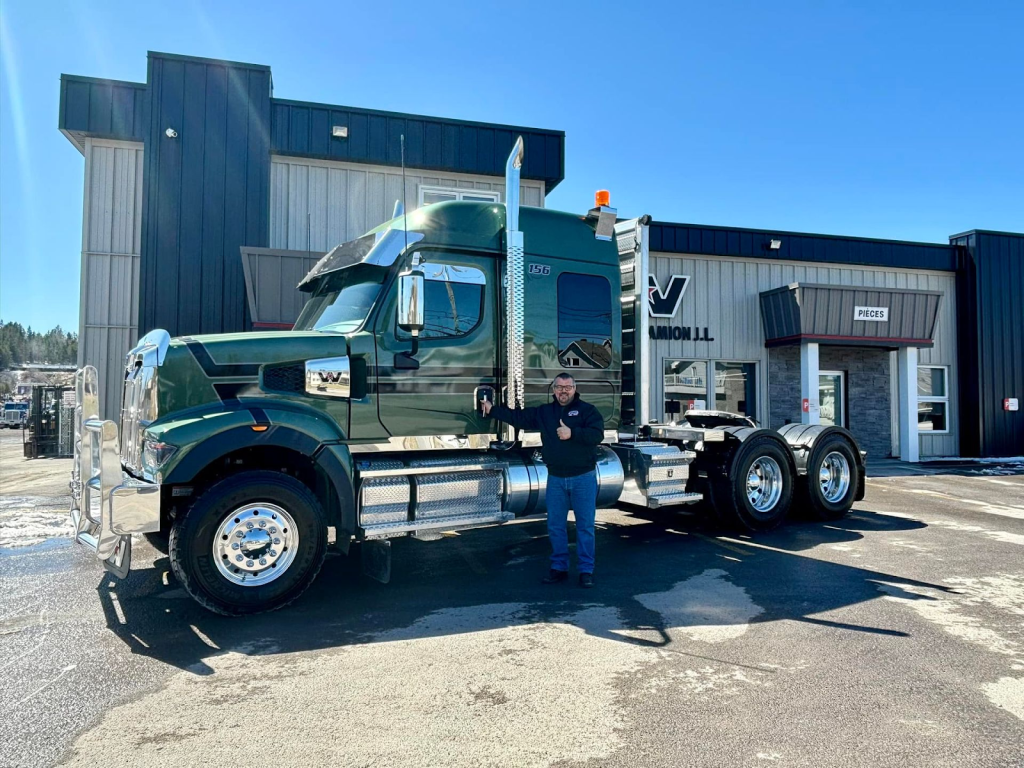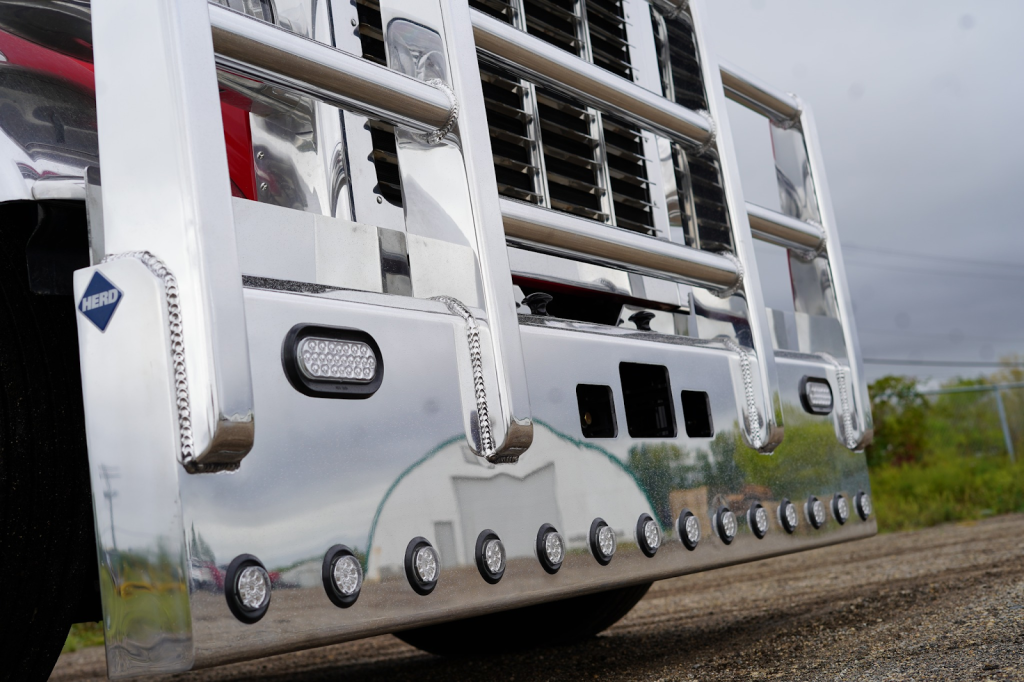Fleet managers and safety coordinators face mounting pressure to reduce operational costs while maintaining vehicle safety standards. Truck guard damage prevention represents one of the most effective strategies for protecting valuable assets while delivering measurable returns on investment through reduced repair costs and operational downtime.
Front-end collisions with wildlife, debris, and other vehicles create significant financial burdens for commercial fleets. Professional protection systems provide quantifiable benefits that extend beyond immediate damage prevention to include insurance considerations, asset value retention, and operational continuity.
This analysis examines the mechanisms by which truck guards prevent costly damage, supported by real-world evidence and financial analysis that demonstrate the business case for implementing protection systems. Fleet decision-makers will find practical guidance for evaluating protection investments and measuring their effectiveness.

Damage Prevention Mechanisms and Technical Protection
Truck guard damage prevention operates through multiple engineering principles that distribute impact forces and protect critical vehicle components. Understanding these mechanisms enables fleet managers to evaluate protection systems and justify implementation decisions with technical evidence.
Energy absorption represents the primary protection mechanism in modern guard systems. When impacts occur, properly designed guards absorb and redistribute collision forces across the entire protection structure rather than allowing concentrated damage to critical components. This distribution prevents catastrophic damage that often occurs when impacts strike unprotected grilles, headlights, or cooling systems.
Deflection systems guide debris and smaller objects away from vulnerable components. The angled surfaces and strategic design elements redirect impacts away from expensive headlight assemblies, grille components, and cooling system elements that are frequently damaged in unprotected vehicles.
Material selection significantly impacts the effectiveness and longevity of protection. HERD truck guards utilize engineered materials and construction methods that provide optimal protection while maintaining structural integrity through repeated impact scenarios.
Key protection mechanisms include:
- Energy distribution: Spreading impact forces across guard structures rather than concentrated points
- Component shielding: Physical barriers protecting lights, grilles, and cooling components
- Deflection geometry: Angled surfaces redirecting debris and smaller impacts away from critical areas
- Structural reinforcement: Enhanced mounting systems that maintain protection integrity during impacts
- Access preservation: Maintaining service access while providing comprehensive protection
Cost Analysis and Financial Impact Assessment
Fleet financial analysis reveals that truck guard damage prevention provides measurable cost savings through reduced repair expenses, decreased downtime, and extended component life. A comprehensive cost evaluation encompasses direct repair savings, operational impact reduction, and asset value preservation.
Direct repair cost reduction represents the most immediately measurable benefit of implementing a protection system. Unprotected vehicles often require extensive component replacement following wildlife encounters or debris impacts. Protection systems typically reduce repair costs significantly by preventing damage to expensive assemblies.
Operational downtime costs often exceed direct repair expenses due to lost productivity and schedule disruptions. Protected vehicles frequently remain operational following minor impacts that would sideline unprotected trucks for extended repair periods.
Component life extension provides additional value through delayed replacement cycles and reduced maintenance frequency. Protection systems shield components from environmental damage and minor impacts that accumulate over time, extending service intervals and component longevity.
Financial impact categories include:
- Repair cost avoidance: Direct savings from prevented component damage
- Downtime reduction: Operational savings from maintained vehicle availability
- Component longevity: Extended service life for protected assemblies
- Asset value retention: Higher resale values for protected vehicles
- Insurance considerations: Potential premium reductions and claim frequency improvement
Evidence-Based Case Studies and Real-World Results
Real-world implementation data demonstrate the effectiveness of truck guard damage prevention across diverse fleet applications and operating environments. These examples provide quantifiable evidence for business justification and ROI calculations.
Highway fleet operations show consistent damage reduction patterns following protection system implementation. Fleet managers report significant decreases in wildlife-related damage claims and reduced frequency of minor collision repairs. Long-haul operations particularly benefit from protection during dawn and dusk periods when wildlife activity peaks.
Regional delivery fleets experience notable improvements in urban collision prevention and parking-related damage reduction. Protection systems effectively shield against loading dock impacts, tight-space maneuvering damage, and low-speed collision scenarios common in commercial delivery operations.
Vocational applications demonstrate the effectiveness of protection in demanding environments, including construction, waste management, and municipal services. These challenging applications demonstrate that protection systems maintain their effectiveness despite exposure to debris, harsh conditions, and frequent impact scenarios.
Documented benefits include:
- Incident reduction: Measurable decreases in damage-related claims and repair frequency
- Severity mitigation: Reduced repair costs when incidents do occur
- Operational continuity: Maintained vehicle availability following minor impacts
- Driver confidence: Improved safety perception and reduced operational stress
- Asset protection: Enhanced vehicle condition and market value retention
Insurance Impact and Risk Management Benefits
Truck guard damage prevention influences insurance considerations through reduced claim frequency, lower average claim costs, and improved fleet safety records. Insurance coordinators find that protection systems provide measurable risk reduction that often translates into premium considerations.
Claim frequency reduction directly affects insurance experience ratings and renewal considerations. Fleets implementing comprehensive protection systems typically exhibit decreased incident rates, which insurance carriers recognize during policy evaluations.
Claim severity reduction occurs when incidents do happen, as protection systems often prevent minor encounters from becoming major damage events. This reduction in average claim costs improves fleet loss ratios and supports favorable insurance relationships.
Improving the risk profile through proactive safety measures demonstrates the fleet’s commitment to loss prevention. Insurance carriers increasingly recognize comprehensive protection programs as indicators of professional fleet management and reduced risk exposure.
Insurance-related benefits include:
- Premium considerations: Potential reductions based on improved loss experience
- Deductible impacts: Fewer claims reaching deductible thresholds
- Renewal advantages: Improved experience ratings supporting favorable terms
- Risk mitigation: Demonstrated commitment to proactive loss prevention
- Claims management: Simplified processing for protected vehicle incidents
Implementation Strategy and ROI Optimization
Successful truck guard damage prevention programs require systematic implementation that maximizes protection benefits while optimizing financial returns. Strategic planning ensures the maximum realization of benefits and supports long-term fleet objectives.
Phased implementation enables fleet managers to validate the effectiveness of the protection system before full deployment. Starting with high-risk vehicles or routes provides measurable data that supports informed decisions for broader implementation.
Performance monitoring enables continuous improvement and quantifies the value of the protection system. Tracking incident rates, repair costs, and operational impacts provides evidence for program expansion and system optimization, supporting informed decisions.
Training integration ensures drivers understand the protection system capabilities and limitations. Proper training maximizes protection effectiveness while preventing damage from improper use or unrealistic expectations.
Implementation optimization includes:
- Risk assessment: Identifying highest-value protection opportunities
- System selection: Matching protection levels to operational requirements
- Installation planning: Minimizing operational disruption during deployment
- Performance tracking: Measuring effectiveness and financial impact
- Continuous improvement: Adapting strategies based on real-world results
Fleet managers who implement comprehensive protection strategies achieve measurable improvements in operational costs and safety performance. HERD provides expert guidance for developing effective protection programs tailored to specific fleet requirements and objectives.

Shield Your Truck with Proven Front-End Protection
Truck guard damage prevention delivers quantifiable benefits that support business objectives while protecting valuable fleet assets. The evidence demonstrates clear financial advantages through reduced repair costs, decreased downtime, and improved operational efficiency.
Successful implementation requires systematic planning, the selection of an appropriate system, and ongoing performance monitoring. Fleet managers who commit to comprehensive protection strategies achieve measurable improvements in cost control and operational performance.
The investment in quality protection systems pays dividends through reduced operational complexity, enhanced asset protection, and improved total cost of ownership. Ready to protect your fleet investment? Contact HERD for expert guidance on implementing effective damage prevention solutions tailored to your operational requirements.
Frequently Asked Questions
How much can truck guards reduce front-end damage costs?
Truck guards typically provide significant damage cost reduction by preventing impacts to expensive components like headlights, grilles, and cooling systems. The exact savings depend on operating environment, incident frequency, and protection system specification, but most fleets experience measurable cost reductions within their first operational year.
Do truck guards affect insurance premiums or coverage?
Many insurance carriers recognize truck guards as proactive safety measures that can reduce claim frequency and severity. While specific premium impacts vary by carrier and policy terms, fleets often experience improved experience ratings and favorable renewal considerations based on reduced incident rates.
What types of damage do truck guards prevent most effectively?
Truck guards excel at preventing wildlife collision damage, debris impact damage, and minor front-end collisions common in parking and loading scenarios. They’re particularly effective against impacts that would damage headlights, grilles, and cooling components in unprotected vehicles.
How long does it take to see ROI from truck guard installation?
ROI timelines vary based on operating conditions and incident frequency, but many fleets see positive returns within their first year of operation. High-risk routes or applications with frequent wildlife encounters often exhibit faster payback periods due to avoided repair costs and reduced downtime.
Can truck guards prevent all types of front-end damage?
While truck guards significantly reduce front-end damage from common scenarios, they cannot prevent all possible damage types. Severe high-speed collisions or impacts with extremely large objects may exceed protection system capabilities. However, guards typically reduce damage severity even in major impact scenarios.